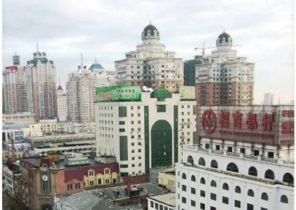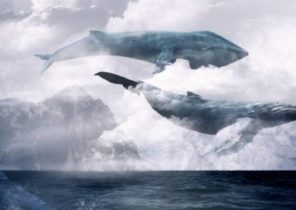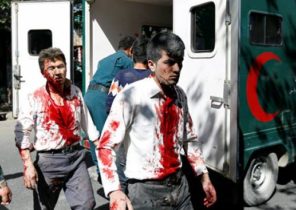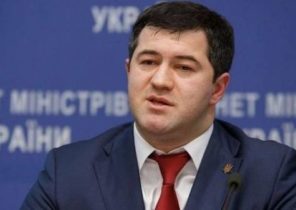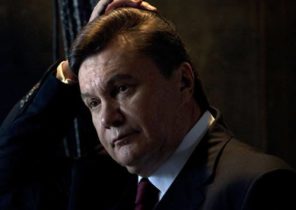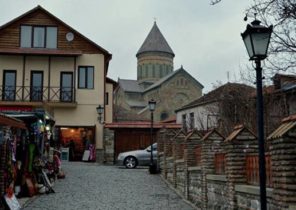
The family of journalist Helsingin Sanomat Konttinen Jussi (Jussi Konttinen), who left for a year in Siberia, have been able to enjoy the first real frost.
This occurred on 8 December. The column of our thermometer outside has fallen to the mark of minus 50 degrees. My personal temperature record broken.
The morning seems just a little colder than in previous days. Frost tingles your face. Windless. The horizon is hazy. As before, get to the toilet in the yard, as here, in a rural region of Eastern Siberia, no running water.
Contrary to urban legend, the urine stream does not freeze, at least at 50 degrees below zero.
Every Finn has a way of Siberia, and he is not very positive.
Siberia is far away from everything. This “Russian hell”, where it is cold and dreary. In Finnish language there is a saying “Siperia opettaa”, “Siberia teaches”, which means that any business person can learn only through hardship. Siberia in English means a job or a place associated with punishment or isolation.
When winter got to December, the stereotypes associated with the climate itself. Here in Yakutia, or Sakha, is sufficient holotnaa.
The weather report says that in Finland, it rains, but I’m still glad to be here. We have sunshine. The night sky is amazing. A roadside lights in the villages quenched for the night, and appears in the sky and the milky Way. And heat in the house is enough.
I moved with the family to Siberia at the end of August. I have to write here a book about Siberia.
In the early 2000s, I spent a year studying in Irkutsk. Since Siberia does not give my heart peace. I traveled its length and breadth, and always wanted to return to this unusual corner of the world. Here you can experience vast expanses of wild nature, to get drunk from the aroma of cedar, to drink from the mineral springs, there are ice fish, and also often enjoy the hospitality of the local.
Siberia is not only a part of Russia. North Asia, like a separate a part of the world.
In Russia, the word “Siberia” is used somewhat differently. Ekaterinburg — not Siberia, and the Urals. Vladivostok, located on the Pacific coast in turn — the far East.
In addition, Siberia is different. The largest industrial cities of Western Siberia — Omsk and Kemerovo, located near the TRANS-Siberian railway. There are steppe and agricultural areas.
I, however, terribly interested in the unconquered part of Siberia, which is far away from cities, and where only the beginning of the coming civilization. Although the Russians had crossed the Ural mountains back in the 1580s, a large part of Siberia is still undeveloped, and the scenery here is of a strong man.
Of course, we are not the first Finns in Siberia. During the existence of the Russian Empire in Siberia traveled Finnish researchers, for example, the philologist Mathias castrén (Castrén, Matias), the longest expedition in Siberia which lasted into the 1840s four years. Expedition native communities Mäntsälä (North of Helsinki, approx. TRANS.) Adolf nordenskiöld (Adolf E. Nordenskiöld) for the first time, passed the whole Northern sea route.
In Siberia was sent to various Finnish politicians, including future President Per svinhufvud Mind (Pehr Evind Svinhufvud), since the return of which to Finland this year will be 100 years old.
The Finns lived in Siberia and voluntarily.
Vice-Admiral Ivan Furugelm (Johan Furuhjelm) was the military Governor of the Maritime region, whaler and sailor Fridolf Huck (Fridolf Höök) was founded by a Finnish utopian settlement on the Pacific coast. In Kamchatka, another Finn was the leader of the fishing campaign and married to a female native.
In Siberia, there are still prison and serving his sentence political prisoners. Near Chita was sitting billionaire Mikhail Khodorkovsky. In the Yakutsk prison serving a 20-year term of Ukrainian film Director Oleg Sentsov, who was charged with “terrorism” during the occupation of the Crimea.
Now live in Siberia, the Finnish preachers, exchange students and hockey players. Hockey clubs KHL is in Omsk, Yekaterinburg, Chelyabinsk, Khanty-Mansiysk, Novosibirsk and Novokuznetsk.
Currently, the Finnish players are only in Khabarovsk “Amur”. Play Kristian Kuusela (Kristian Kuusela), Juha Metsola (Juha Metsola) and, Ramstedt Teemu (Teemu Ramstedt). In the past years in the KHL worked more Finns, one of the most beloved of them — Hannu jortikka (Hannu Jortikka), who worked as a coach in Khabarovsk and Vladivostok.
In Yakutsk, the nearest city, the Finnish culture is present in the form of two Hesburger cafes that advertise “famous Finnish Burger”.
One day I received an unexpected call from the organizing Committee on holding local athletic games. “Hi, this is petteri”, − speak fluent Finnish young student-scientist Peter Pods. He learned Finnish in a very short internship in Helsinki. Now Pods is an informal adviser on culture, including in the wrestling competitions.
Real winter is a relative concept. At the end of November, when the frost has reached 30 degrees, a local man in conversation with me were worried about warming.
Yakutia — the coldest inhabited region of the world and life depends largely on sharply continental climate. For example, horses can graze the whole year, because the climate is dry and little snow.
 © RIA Novosti, Yevgeny Vadim epanchitsev | go to photosangelina Russia. Yakutia
© RIA Novosti, Yevgeny Vadim epanchitsev | go to photosangelina Russia. Yakutia
Climate change, however, can prove to be fatal for animals and people of Siberia. In 2013 on the Yamal Peninsula died of starvation 60 thousand deer, when due to unexpected weather changes the ice crust has covered their pastures. In Yakutia has killed people, for example, when due to unexpected winter rain wet and cold tents of the shepherds.
In Yakutia, we visited a cave, which is the most important tourist attraction of the area. Here because of the permafrost temperature is kept at subzero levels even in summer, and in the cave is a permanent exhibition of sculptures made of ice. In winter it is good to warm up.
Where we live, the permafrost reaches a depth of a few hundred meters.
Siberia may play a crucial role in the fate of the world.
Permafrost contains large quantities of methane, a greenhouse gas, the effect of which is much stronger than that of carbon dioxide. The amount of methane in the atmosphere increases with increasing speed.
Here, in Eastern Siberia, is the world’s largest area of permafrost, which is estimated to contain over two billion tons of methane, more than anywhere else. According to the researchers, the worst has already begun: from the bottom of the Laptev sea, located in the Northern part of Yakutia, started out methane. The permafrost layer at the bottom of the sea began to melt near the shore and underwater slopes.
So what is happening in Siberia. Through its territory to Siberia three times more than the European Union. When you fly over Siberia in cloudless weather, the bottom for many hours see the uninhabited forests.
It is alleged that the name Siberia comes from the Tatar language and means “sleeping land”. It is obvious that it is not, but the title is quite apt.
The nature of Siberia is so diverse as is possible in a large area.
I’m often asked: how is it in the tundra. I do not know — to the tundra from here a thousand miles. We live about the same latitude with the Finnish Tampere, and here there are larch forests.
Siberian taiga — the largest forest in the world, much larger Amazon rainforest. Most have not touched a chainsaw or axe, but forest fires are raging here every year — last summer in Siberia burned 25 thousand square kilometers of forest.
 © RIA Novosti, Shidlovsky | go to photomontage in the area of construction of the Baikal-Amur mainline
© RIA Novosti, Shidlovsky | go to photomontage in the area of construction of the Baikal-Amur mainline
However, in the middle of nowhere is hard to find a place where I would foot the human foot. Some years ago, when I, with my friends, rode the horses a few hundred kilometers on a deserted taiga of the Sayan mountains, I noticed that our guides — Tuva — knew every bump and found runaway for miles horses. In the North of Yakutia our drivers of snowmobile oriented in a deserted tundra pattern left by the wind on the snow surface.
Probably the most unusual landscapes are found on the Kamchatka Peninsula, which is a continuation of the ridge of volcanic Islands located in the Pacific ocean. In October I couldn’t resist the temptation: only two thousand kilometers away, has erupted for the past six months, the largest volcano in Eurasia — Klyuchevskaya Sopka, which reaches a height of almost five kilometers. I hurriedly went to Kamchatka and rushed to the foot of the volcano just right before the road became impassable in winter.
I’ve never seen anything like it. Two nights in a row of huge mountain with steep slopes spat out streams of lava from its depths, illuminating the starry sky. Day was visible in a 20-kilometer-long tail of smoke coming from the crater. On the other side of the valley above the Shiveluch volcano was a column of smoke height of a mile, resembling a mushroom.
Our guide Kluchevskoy was an employee of the national Park and mountaineer Alexander Bychenko. He moved to Kamchatka in the 1980-ies because of the volcano. “He volunteered to serve here.”
According to Bychenko, the Peninsula is the best place to keep track of eruptions: but nobody forbids to come closer. He says he ran around the lava, the temperature reached 700 degrees, and watched the eruption from the edge of the crater.
Unforgettable natural performance observed in 2012, when he suddenly began erupting volcano Tolbachik. From the volcano had almost 30-km-long lava flows that you could examine up close.
According to Bychenko, the most remarkable on the Kamchatka Peninsula is that here you can see the changes in nature, in the course of his own life. “I saw, as a result of the eruptions have formed a boiling lake of acid, or disappeared lakes and rivers. The rocks collapsed, geysers began to act or disappeared kilometer canyons ceased to exist, the lava split the glaciers”.
We watched the eruption of the Klyuchevskaya volcano from a safe distance, but the bear, who was, judging by the tracks right next to us, saw.
Must be the distance form the clearest picture of the world. They have an impressive expression in the miles and even more impressive at the time. Our flights in Yakutia on the plane from St. Petersburg lasted only seven hours, but the Luggage sent by train, traveled five weeks. But that’s nothing — in the XVII century the journey from Moscow to Yakutsk waterways took a year and a half.
Distance has a different temporal expression: in Russia, 11 time zones, and Siberia is always in front of the whole country. When in Moscow the working day starts in Vladivostok it ends.
“Good day” − often written in the beginning of the email if you do not know where the recipient of the letter.
In Siberia there is a large city, where there are no roads and Railways. A few years ago through Siberia was not a normal road. Between Chita and Khabarovsk, the cars were loaded into wagons and drove them some distance by rail.
When I once traveled to a distant Penzhina district, located between the Kamchatka and Chukotka, on the road, it took three weeks instead of the planned one. The two flights I got to the village on the shore of the Bering sea where waited three days postponed due to rain the next flight together with the management of the fishing company. Then I continued my way by helicopter to the Koryak village, and from there to track vehicles went to the tundra, and the tundra on sledges back. The way back consisted of the same flights and expectations − this time my company was a group of policemen.
If a resident of the Penzhina district, went to the capital Moscow, on the ticket he would have had to spend almost a thousand euros (60 thousand roubles). Many don’t go.
Saying that Russia has two problems: fools and bad roads. The latter problem are trying to solve by building roads, and creating vehicles that are not afraid of any road. On the tractor or caterpillar transport, you can drive anywhere. In the course of traditional modes of transport: I met a man last winter in a reindeer sleigh drive 800 miles to fish.
Of course, because Siberia is still connected to the Federal road network. For example, in Western Siberia are the Federal highway “Vilyui” which comes from the South. The road will end the isolation that existed here for centuries, and will completely change the Outlook.
Yakutsk separates from highway Lena river, the width of which is about two kilometers. Over the river is planned to build the bridge, but the money went to the 19-kilometer bridge that would connect the Crimean Peninsula with the mainland. So Lena is still crossed by ferries and ice. During the thaw, in late autumn the ferry accompanied by an icebreaker, and on the shore waiting for their turn hundreds of unhappy truck drivers.
The guide on Yakutia write that it is accessible via the Northern sea route. But no graphics.
On the Northern sea route say a lot, but at the moment it is of little use. Trial regular movement in recent years has decreased. Most of the year the path is covered with ice so is not a very attractive option for shipping companies. The busiest part is the section between Murmansk and the Delta of the Yenisei river. Further to the East, the movement is complicated by the ice. Especially in the North-East side of the Taimyr Peninsula — even in summer there may be icebergs.
Siberia made Russia great. Incentive to the conquest of Siberia was the sable, a small animal of the weasel family, the fur which is especially prized in Europe XVI−XVII centuries. Then sable was the most important export product of Russia, and he gave 10% of all income from exports.
Currently, the sable was replaced by oil, Russia pumps more than it has ever been since the Soviet era. More than half of oil extracted in a single administrative district in Western Siberia — Khanty-Mansiysk Autonomous Okrug.
 © RIA Novosti, Eugene biyatov | go to photosangelina Russia. Yamalo-Nenets Autonomous Okrug
© RIA Novosti, Eugene biyatov | go to photosangelina Russia. Yamalo-Nenets Autonomous Okrug
The indigenous population of this region are of the Finno-Ugric peoples Khanty and Mansi. In Russia, even in authoritative circles there is a theory of a conspiracy that the basis of friendship of the Finnish kindred peoples lies oil.
Even larger reserves of oil discovered in the continental shelf of the Arctic ocean. Although the price of oil fell, the Russian companies continue, with the support of its foreign partners to drill test wells. Oil production in the Arctic seas is exactly that which is opposed by a Finnish Greenpeace activist Sini Saarela (Sini Saarela), for which she was detained in Russia.
In addition to oil and gas in the depths of Siberia lies the whole periodic table.
In August I visited Norilsk — a city with a population of 170 thousand people, located North of the Arctic circle. The reason for the appearance of the city was the world’s largest deposits of Nickel, which deals with the development company Norilsk Nickel, the world’s largest producer of Nickel and palladium. In addition, Norilsk mined copper, cobalt, gold, silver, platinum, iridium, selenium, rhodium, ruthenium, osmium, sulfur, and tellurium.
Norilsk is one of the most polluted cities in the world. It is the largest source of sulphur emissions in the Arctic zone, and he’s polluting with heavy metals. In September, the local plant became famous for the river, the water is stained red. The company paid a fine of 500 euros (about 30 thousand rubles).
Since 1995, the General Director “Norilsk Nickel” is a Moscow-based banker Vladimir Potanin, who bought the company from the state at auction. Potanin suggested that Boris Yeltsin auctions to balance the state economy. Now, subject to adjustments for inflation, the market value of the company in forty times its cost at purchase.
Mines and factories are privately owned, but would not exist without the Stalinist system of the GULAG camps. Norilsk − the most striking example of the achievements of the economy based on forced labour. In its camps in the years 1935-1956 worked a total of half a million people.
79-year-old Irina Yaskina one of the prisoners, extant.
“When they say that this town was built by young members of the Komsomol, are simply lying. Norilsk was built by “Komsomol” with numbers on the back. Such as I am. My room was X401,” says Yaskina in his apartment in the tower block.
She was convicted under article 58 − for treason.
“My fault was that I wrote to my friend, the daughter of the family, who was also sent: “Marusya, don’t cry, and we will have more bright days,” said Yaskina and bursts into tears. When she wrote the letter, she was already living in exile, as her parents were expelled as enemies of the people permit in a small Ural village.
In Norilsk Askino identified in the corrective labor camp No. 6, which was the women’s camp. Women built the city alongside men.
“Those who knew how, lay a brick. I drove the car solution, and raised it on the floor. Lenina street 10, street of Bohdan Khmelnytsky 21 − lists Yaskina. − Don’t remember.” Eskinol opinion differs from the opinions of those who admires Stalin’s time.
“Stalin was a lot handsome, but he was a stinky shit. Let him in his grave. So to pick up the kids and make them enemies of the people”.
At the end of October, I went to the head of our municipality. Our village is located in the floodplain of the Lena river. On the high Bank of the river starts the taiga. I asked, whether they live there. “Yes, − he answered. − We’ll go and have a look?”
Two days later we went to the depths of the forest — 65 miles the way we did it in five hours. Taiga was not deserted: it was two deep ruts from cars, and occasionally towards us out of a shaggy semi-wild Yakutian horses. On the road met the lonely farms and large fields of oats.
One day we stopped in a sacred place to tie ribbons and leave the spirits pancakes. Initially, the Yakuts shamans, and in their lives many different beliefs.
Before the Yakuts lived in Alash − two or three houses in which the family lived, together engaged in breeding horses and cattle. Our ultimate goal was to alas, mastered last winter, the farm where the cousins have been breeding horses. They did go back to the old way of life.
Despite this, agriculture is quite modern: a brand-new garage and the house, a wood-fired boiler and water heating. Next week will install a satellite dish and spend the Internet. Families will move here when everything is equipped.
Many small peoples of Siberia had a very hard time in the meat grinder of time. Already in tsarist times these people were considered “endangered”. For example, Koryak suffer from poverty, tuberculosis and alcoholism.
However, almost half a million people Yakuts live well. The Yakut language is heard everywhere. People listen to pop music in their own language, fond of the Yakut wrestling and respect the traditions, like eating frozen meat foal. Main control stations occupied by the Yakuts. However, the head of Yakutia had to abandon the title of “President”, since in Russia at the moment the President can be only one. But it began to be called “Il Darkhan” − so in Yakutia, traditionally called the people’s ruler in the XVI century.
The Yakuts say about Russia like it’s a completely different country.
The conquest of Siberia marked the beginning of the Cossack ataman Yermak in the 1580-ies. For many Russians he is a hero. In the summer I visited Tobolsk, which was the first capital of Siberia, and before that the capital of the Tatars — city in Siberia. Siberian Tatars obeyed only to the king in 1670-ies.
Close to the city held the military-historical festival in which participants played the battle between the Russian and Tatar. Many took pictures next to the monument to Ermak.
In fact, the Yermak was a mercenary who with his retinue hunted robbery on the high road and on the rivers.
Many in Russia believe that the annexation of Siberia occurred peacefully and in a civilized manner, not as the conquest of America from the Indians. In fact, the conquest of Siberia was roughly the same as the expansion of other colonial powers.
Almost all the peoples living in Siberia, fought the invaders, but, not having firearms, was defeated. Russian levied of his displaced subjects heavy fur taxes, seized their land, taken hostage, enslaved, tortured and committed mass executions that have documented.
In Siberia was settled by Russian settlers, there was hiding the persecuted believers, and it became notorious as a place of exile. My wife jokingly referred to as “the wife of the Decembrist”. This hint at young intellectuals, the Decembrists of the 1820s, many of whom died in Siberian exile.
By the end of the period of tsarist power in Siberia moved eight million Russian. Now the indigenous peoples of Siberia were in the minority: their population is less than 1.5 million of the 38 million inhabitants. Only in Yakutia and Tuva they are in the majority.
Currently the demographic situation in Siberia is changing. In connection with the collapse of the Soviet Union the population has decreased here by 9%, while in European countries it decreased by only 1%. Russian leave, the indigenous people remain.
In the Republic of Sakha we live in the centre of the Asian Russia. Unlike the Russians, the Yakuts aren’t going anywhere. When I was in Yakutsk in 2008, the streets were a lot of Russian. Now they were running low.
Lots of Russians went from the Far East, where the state now seeks to attract new residents, offering a hectare of land for free. The experiment is connected with unsuccessful attempts to stop the outflow of population. Previously tried to do this with special economic zones, cities casino and a large investment. For example, in Vladivostok, built a free port, a huge University, magnificent bridges, built luxury hotels, an ice rink, this is a Seaside scene of the Mariinsky theatre. But the population managed to increase only by a little.
For most residents of Siberia to their native land is an integral part of Russia, but many would like more autonomy. Already in the 1860-ies was born here regionalism − social and political movement that advocated a Federal structure of the state, democracy and self-determination of the territories, and supported by indigenous peoples. Supporters of this movement, regionalists — even talked about the special of the Siberian nation.
And now Siberia is rather poorly represented in the management bodies of Russia: of the 32 Ministers in the government, only five are Siberians.
The center does not trust its provinces. For example, in Novosibirsk, which is home to half a million inhabitants, is considered a potential hotbed of the protest movement.
There I met a young activist Philip, who is organizing the demonstrations. In 2014 they were going to organize a “March for federalization of Siberia”. Thus, alluded to the “federalization of Ukraine”, which is officially considered Russia’s aim in Ukraine. Russia is demanding greater rights for the Russian-speaking population of Eastern Ukraine. The federalization of Siberia was, in the opinion of the authorities, a bad idea, and the March was banned.
In the summer I interviewed the popular mayor of the semi-million city of Yekaterinburg Yevgeny Roizman. It is a rare Russian leader, who was elected in the elections, but, nevertheless, independent.
“Centralization is very strong, − says Roizman. − This city is very rich. If local management had more power, the city could do to cope with the crisis.”
 © RIA Novosti, Pavel Lisitsyn | go to fotolachestvennye the mayor of Yekaterinburg Yevgeny Roizman
© RIA Novosti, Pavel Lisitsyn | go to fotolachestvennye the mayor of Yekaterinburg Yevgeny Roizman
Most of the resulting tax goes to Moscow, where is located the main offices of many companies. In this sense, Siberia is a colony. Russia wants to sell a large part of the Siberian oil and gas to China. Of South Yakutia gas went to China through the pipes. There is a construction of two giant pipelines. Markets in Siberia you see a lot of Chinese.
On the other hand, in Russia beware of Asians and Chinese influence. Siberia I want to see populated for reasons of political security. In the summer of 2016, the Minister of culture Vladimir Medinsky said at an economic forum in St. Petersburg that Russian cartoons showing “Asian face”. In Yakutia the uproar.
That Russia would without Siberia? Maybe that would be one of the Eastern European countries with a medium level of development. Great Poland, which would make their economies diversified, as oil and gas reserves it would be much less. The Eastern boundary would be the Ural.
And that Siberia would be the without Russia? Maybe that would be a province of China, if they embodied the greatest fears of many Russians.
What is the future of Siberia?
From the crazy projects of the Soviet time, fortunately, refused. At that time wanted to turn the rivers to the South. Climate wanted to do more moderate melting ice with coal, creating an artificial warm ocean currents in the Arctic ocean and warming in the lake Baikal by atomic batteries.
Well, maybe the person would still be able, eventually, to heat Siberia, destroying the permafrost.
This is followed by many troubles, but ready for them — at least, the followers of “the Siberian Christ” Vissarion. They live in an isolated community in the Sayan mountains and are looking forward to a time after the flood. They call their community the “Promised Land”.
I visited the quaint community of Vissarion 13 years ago and returned there last summer. In the community believe that Siberia is the last refuge of mankind. According to Vissarion, God chose Siberia, only because it is a safe place during the great cataclysms which await the world.
One of the cult members asked me not to move to Yakutia, and to come to live with a family in their community. I said that I still think about it. In the community of Vissarion, of course, have a good hand. They tend to do throughout their own, no money. Negative feelings and even negative thoughts to eradicate. In football matches are glad, even a goal which was scored by the enemy.
But the family I promised to spend a year in Yakutia. And yet it’s nice to know that Siberia is always ready to receive me.
